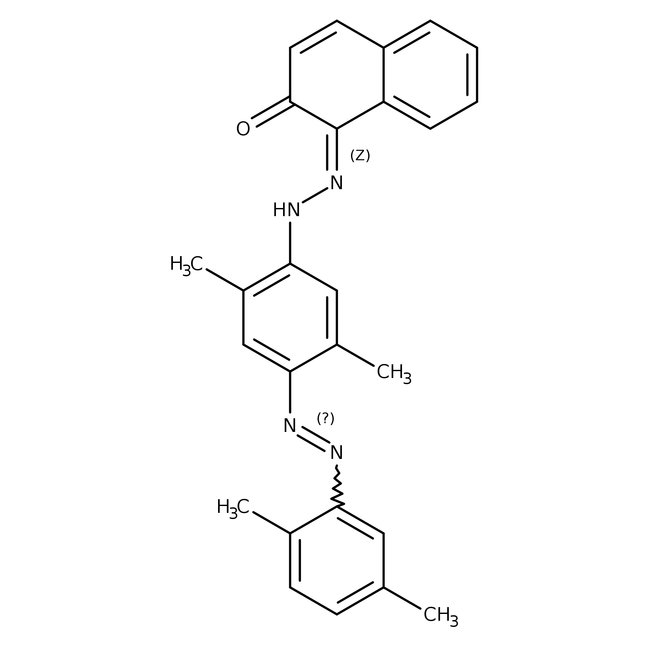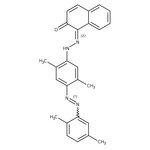Search Thermo Fisher Scientific
Thermo Scientific Chemicals
Oil Red O
CAS: 1320-06-5 | C26H24N4O | 408.51 g/mol
| Catalog Number | Quantity |
|---|---|
| ALFA12989.14 | 25 g |
Catalog number ALFA12989.14
View Price:Sign InSign in to see your account pricing. Need an account? Register with us today.
Quantity:
25 g
Specifications
Chemical Name or MaterialOil Red O
Melting Point∼166°C (decomposition)
CAS1320-06-5
Recommended StorageAmbient temperatures
EINECS Number215-295-3
View more
Oil Red O is suitable as a lipid and lipoprotein stain on cellulose acetate. It is one of the diazo dyes used for staining of neutral triglycerides and lipids. It is used to analyze muscle fibers. It acts as an agent that stains lipids, muscle fibers and alveolar macrophages. Further, it is also used as marking dye. It is an active component of red colored smokes in pyrotechnics.
This Thermo Scientific Chemicals brand product was originally part of the Alfa Aesar product portfolio. Some documentation and label information may refer to the legacy brand. The original Alfa Aesar product / item code or SKU reference has not changed as a part of the brand transition to Thermo Scientific Chemicals.
Applications
Oil Red O is suitable as a lipid and lipoprotein stain on cellulose acetate. It is one of the diazo dyes used for staining of neutral triglycerides and lipids. It is used to analyze muscle fibers. It acts as an agent that stains lipids, muscle fibers and alveolar macrophages. Further, it is also used as marking dye. It is an active component of red colored smokes in pyrotechnics.
Solubility
Soluble in ethanol:chloroform (1:1). Insoluble in water.
Notes
Incompatible with strong oxidizing agents.
Oil Red O is suitable as a lipid and lipoprotein stain on cellulose acetate. It is one of the diazo dyes used for staining of neutral triglycerides and lipids. It is used to analyze muscle fibers. It acts as an agent that stains lipids, muscle fibers and alveolar macrophages. Further, it is also used as marking dye. It is an active component of red colored smokes in pyrotechnics.
Solubility
Soluble in ethanol:chloroform (1:1). Insoluble in water.
Notes
Incompatible with strong oxidizing agents.
RUO – Research Use Only
General References:
- Sıdır, İ.; Sıdır, Y. G. Estimation of ground and excited state dipole moments of Oil Red O by solvatochromic shift methods. Spectrochim. Acta, Part A 2015, 135, 560-567.
- Wu, W. J.; Mo, D. L.; Zhao, C. Z.; Zhao, C.; Chen, Y. S.; Pang, W. J.; Yang, G. S. Knockdown of CTRP6 inhibits adipogenesis via lipogenic marker genes and Erk1/2 signalling pathway. Cell Biol. Int. Rep. 2015, 39 (5), 554-562.



